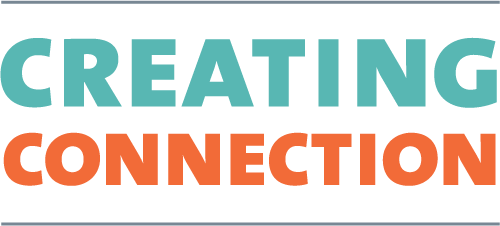Research Methodology
Understanding the relationship between exisitng public values and arts, culture, and creativity is a critical component of Creating Connection. And while there has been considerable research done to date around the benefits of engaging in creative activities, this particular question about their relationship to exisitng values has not received as much attention in previous research efforts.
Thus, in 2014, we embarked on a multi-phase, national research project that would help us identify and understand these public values and craft messages that could begin to change expectations around creativity.
Literature Review
Our research launched with a literature review of studies previously conducted on the subject of arts and culture. The review considered studies around arts education, arts participation and behaviors, the perceived benefits of the arts, public sentiments toward the arts and culture, and subjective wellbeing, among others. [1]
National Survey with Regional Oversamples
The quantitative portion of our research package included a national survey, which we created in tandem with research and polling firm, Lake Research. The survey instrument was reviewed by members of our advisory teams in San Jose, Oregon, and Michigan, as well as broader networks of their stakeholders and our project funders. It launched in late September 2014 and garnered responses from 2,586 adults nationwide, as well as oversamples of approximately 400 adults in California, San Jose, Michigan, Minnesota, and Oregon.
In most cases, the data were weighted slightly by education, race, age, and party identification to reflect the attributes of the actual population.[2]
After the survey closed, Lake Research Partners provided a written analysis of the findings. It included a summary of their topline results as well as full cross-tabulation worksheets for each site that allowed us to analyze the data in-depth and develop a set of preliminary findings.
Focus groups
Results from this quantitative research were used to shape and refine our qualitative strategy, which included focus groups, informal discussions, and one-on-one interviews in: Michigan; Oregon; San Jose; California; and Minnesota. All qualitative research was facilitated by Metropolitan Group.
We conducted formal focus groups in three locations: Michigan, Oregon, and San Jose, California. These sessions were held in focus group facilities, and participants were recruited using a screening tool developed by Metropolitan Group and Arts Midwest for the project. The tool was designed to recruit the individuals that we hypothesized would be most receptive to our goal of making arts and culture a recognized, valued, and expected part of everyday life (which we based on segmentation data from our survey analysis).
Our recruitment skewed slightly toward women and parents of children under 18, and we increased the representation of people of color in all groups to include a greater proportion than would have been dictated by the local community’s population. As a result, people of color comprised 49 percent of the participants in the formal focus groups, exceeding their representation in the test communities and the general national population.
Informal discussions
Our informal discussions took place in Oregon and Minnesota. The Oregon participants were recruited through our advisors and community partners and/or by Metropolitan Group and these conversations were held in less formal public meeting spaces. The discussions in Minneapolis, Minnesota, featured consumer and product marketing experts from Abide Idea Company, General Mills, Inc., and Zeus Jones. Here, the conversations focused on research methodology and messaging tactics, and reinforced our overarching effort to include diverse voices and sectors in our work (i.e., those individuals and organizations who may not have an immediate, vested interest in arts and culture).
Executive interviews
To support our goals around engaging diverse voices in our research, we conducted 11 executive interviews with leaders of communities of color across Oregon. These conversations were conducted via telephone by Metropolitan Group.
[1] A list of resources accessed during our literature review is available for download.
[2] The margin of error for the national survey is +/- 1.9%. For the oversamples, the margin of error was +/- 4.9% for California, Michigan, Minnesota, and San Jose, and +/- 4.6% for Oregon. For the Oregon oversample, the data were weighted more significantly toward people of color than the actual population to ensure relevant sample sizes in the segmenting phase.


